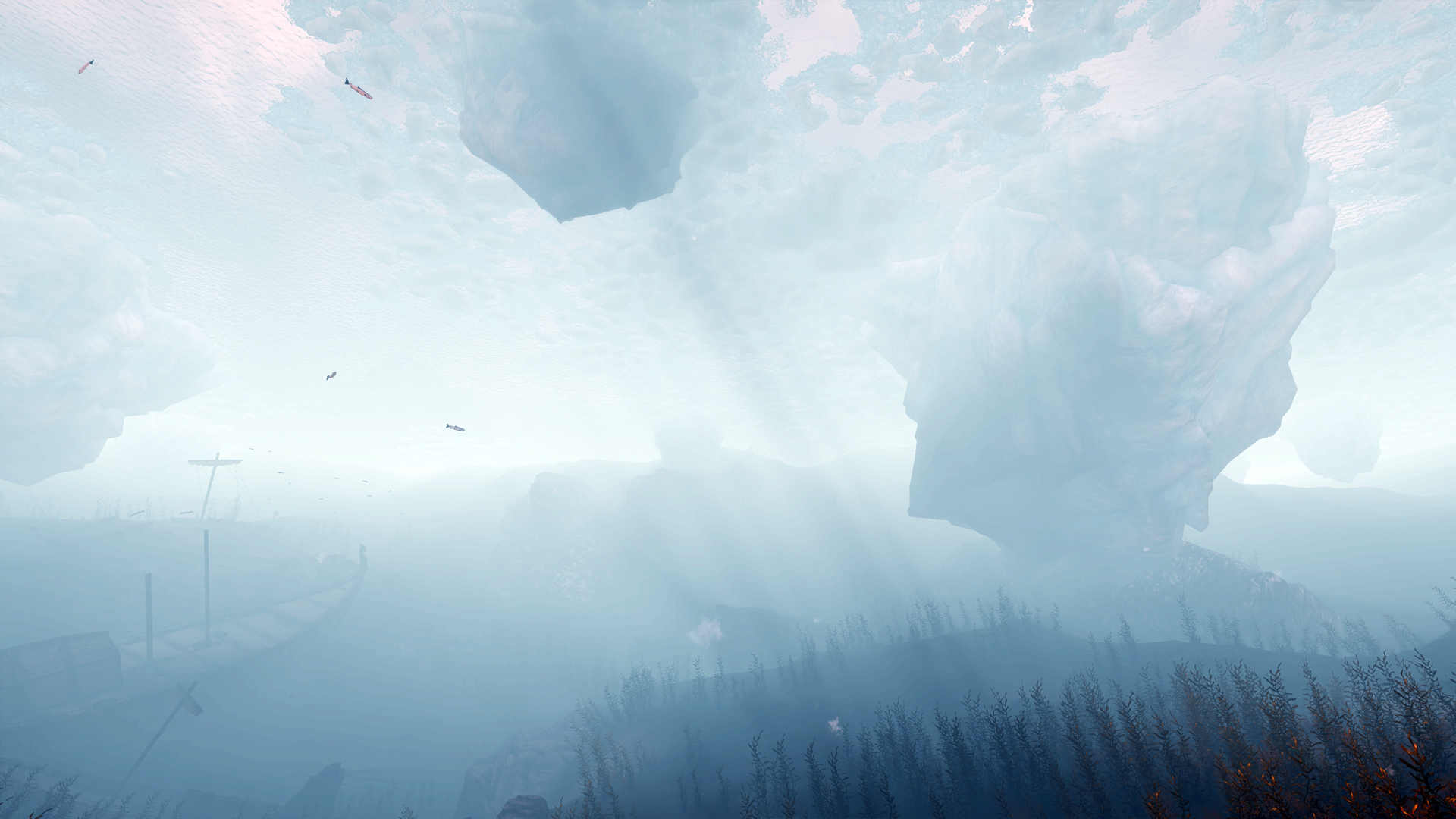Maybe in scale, but MGS2 had DoF, shadows, rain and other effects that were cutting edge at the time.
Shadows? I haven't seen MGS2 on an actual PS2 in person, but all the videos I've seen suggest that it's using some small blob shadows which shift depending on the lighting environment, but which aren't particularly accurate and look a bit sketchy when present alongside environmental hard shadows. The game does have local lights which cast shadows (while Halo does not), but these are used sparingly. By contrast, Halo 1's dynamic objects get fully rasterized shadows which respond to the lightmap's color, "ambientness" (so they're weaker and sometimes color-shifted when appropriate), and direction, helping to ground objects in all environments. These shadows also have very good draw distance. MGS2 definitely isn't the only game of these two that has shadows, and it's not clear to me that it even has the upper hand in that department. The two games use very different solutions to the shadowing problem, and they both decouple environmental shadowing from dynamic object shadowing, but if anything Halo 1 has a more consistent approach that bridges the gap better.
(At the end of the day, neither game seems to have particularly phenomenal shadowing. It's unfortunate that Bungie never really got over this though; Halo 3's core shading model almost belongs in an eighth-gen game, but the shadowing is in some respects inferior even to Halo 1's. I mean, I love Halo 3's visuals, but shadowing
is not its strong point.)
Rain? MGS2 definitely has some spots with more aggressive alpha than would generally be practical on oXbox. Halo does have some nice-looking multilayered snow effects and some animated fog, but MGS2's heavy weather is pretty awesome stuff for 2001.
If we're talking particle systems in general, MGS2 can get away with greater amounts of alpha due to its platform (not that this stopped Halo 1 from occasionally trying, haha), and the artists took excellent advantage of this. Though Halo 1's particle
physics are more complex, handling hundreds of simultaneous environmentally-colliding small particles like sparks and bullet casings.
I'm sort of surprised you didn't mention real-time planar reflections. They're pretty obvious, and MGS2's boxy interior environments make frequent use of them. (By contrast, Halo 1 only uses them in 3 rooms in the whole game).
Where Halo 1 really stands out, though, is that last bit about "cutting edge" stuff. In 2001, Halo 1 was a tremendous showcase for computationally-heavy per-pixel lighting. Loads of environmental surfaces have high-quality normal maps, and they're applied toward tons of reflection components: both diffuse and specular/cubemap from both the environmental lighting and local dynamic lights (which are
not used sparingly).
Heck, in a couple respects it even has advantages over its graphical remake, like surfaces being able to independently reflect multiple specular lobes; CE Anniversary averages light sources together for each surface before carrying out specular shading, so there can be only 1 imprecise lobe when several sources are reflecting off of something.
halo had the texture streaming for the detail levels when you got closer
You sure you're not thinking of Halo 2? Halo 1 has LOD popping for dynamic objects, and being a modern video game, it's certainly possible to spot trilinear MIP transitions if you know what to look for. But AFAIK there's no texture streaming in the sense of making requests to disc according to object proximity.
good physics on the warthog etc
Haha. I love it, but it's more "horrible implementation gone right" than "technically-advanced." Bungie's in-house physics system was computationally expensive and very sketchy.










